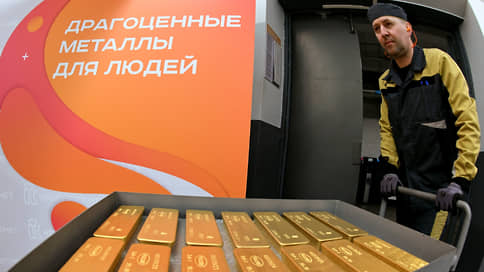In the third quarter, global gold production reached 1,267 tons, which is 6% more than a year ago.
[ad_1]

In the third quarter, demand for gold fell by 6% year-on-year to 1,147 tons. At the same time, this is the best quarterly result of this year. Steadily high interest in the metal remains on the part of the jewelry industry and industry. Although central banks have increased purchases, they still fall short of the record levels of the third quarter of 2022. There is also growing interest in gold from private investors from developing countries: India, China and Russia, but sales from ETFs are holding back investment demand.
According to World Gold Council (WGC), global gold production in the third quarter of 2023 reached 1,267 tons, which is 6% higher than last year. At the same time, the primary production of the precious metal, although it updated its historical maximum, reaching 971.1 tons, increased only by 2%. Recycling brought in another 288.8 tons of gold, up 8% over the year. At the same time, demand for the precious metal (excluding the over-the-counter market) decreased by 6% over the year, to 1,147 tons.
According to WGC estimates, central banks increased their purchases of metal in the third quarter, purchasing a total of 337.1 tons of gold, which is almost double the figure for the second quarter. At the same time, this result is 27% less than a year earlier; then, against the backdrop of high inflation and freezing, parts of the Bank of Russia reserves acquired the maximum amount of metal (see. “Kommersant” dated November 2, 2022).
Steadily high interest in gold remains on the part of the jewelry industry and industry.
At the end of the third quarter, they accounted for 578.2 tons and 75.3 tons, respectively, which is slightly lower than consumption for the same period in 2022, but 17% and 7% higher than the second quarter.
Investment demand in the third quarter amounted to 157 tons, which is almost 40% lower than the result of the second quarter, but more than one and a half higher compared to the same period last year. This range of figures is due to fluctuations in demand for metal from ETFs, which at the end of the last quarter reduced investments by almost 140 tons, which is more than 100 tons less than sales in the third quarter of 2022.
The WGC notes a decrease in demand for the precious metal from private investors.
Over the past quarter, investments in bars and coins amounted to 296.2 tons, which is 7% higher than in the second quarter, but 14% less than in the same period last year. Regional preferences have changed dramatically over the past year. WGC data indicates a sharp decline in demand for gold from private investors from Europe; at the end of the quarter, they purchased only 30 tons, which is almost 60% lower than purchases a year earlier. “The European economy has been teetering on the brink of recession for a year now, and high inflation and high interest rates are limiting consumer spending on gold products,” notes Sovcombank chief analyst Mikhail Vasiliev.
At the same time, investments in the precious metal in developing countries increased. In particular, in China, demand for bars and coins increased by 16%, to 83.1 tons, in India – by 20%, to 54.5 tons. In these countries, gold is a traditional way of saving. “In India and China, buying gold, for example, for a wedding, is a one-time event in a lifetime, and an increase in price even by 10-15% will not make people change their minds,” notes Valery Emelyanov, an expert on the stock market at BCS World of Investments.
The increased interest of the Chinese may be facilitated by worsening economic growth prospects and geopolitical uncertainty due to the deterioration of US-China relations. “China’s stock market is not growing, and the real estate market is stagnating. Therefore, many Chinese choose gold as an investment instrument and a tool for insurance against risks,” notes Mr. Vasiliev.
Russian private investors also followed the general trend of developing countries, increasing investments by a third, from 6.5 tons to 8.5 tons. VTB noted that since the beginning of the year, 50 tons of metal have been sold in the form of ingots, which is 56% higher than the same period in 2022. Now the bank notes that the demand for physical gold has become moderate, including due to market saturation. “Interest in gold as a whole will still remain, and it still has potential for growth in price, which can attract investors,” VTB believes.
[ad_2]
Source link





